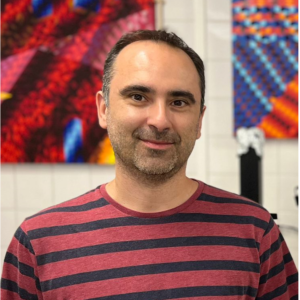At a glance
| Title | Development of photoactive nanoparticles for non-invasive chemogenetic neuromodeling |
| Reference | 2022.15617.UTA |
| Scientific Area | Nano Materials for New Markets |
| Funding (US) | 100 000 USD |
| Leading Institutions | Nova University of Lisbon, PT
University of Texas at Austin, USA |
| Duration | 12 months |
| Start date | September 15, 2024 |
| End date | September 15, 2025 |
| Keywords | Focused Ultrasound, Nanoparticles, Chemogenetics, Neuromodulation |
What is NanoChemogen about?
The NanoChemogen projects aim to explore new nanotechnological approaches for minimally invasive deliver of neuromodulators to the brain with high spatiotemporal resolution. To address this challenge, we will explore the potential of focused ultrasound (FUS), an emergent technology that, comparatively with visible light, affords much deeper penetration in biological tissues, to trigger the delivery of drugs into the brain region of interest. Our strategy consists of the use of biocompatible mechanoluminescent nanoparticles, that emit visible light upon excitation by FUS, acting as transducers that convert ultrasound into light and trigger the release of selected drugs encapsulated in photoresponsive mesoporous silica nanoparticles.
To examine the in vitro and in vivo feasibility of this approach, we will explore the spatiotemporal activation of designer receptors exclusively activated by designer drugs (DREADDs) in specific neurons. For that, the designer ligand clozapine-N-oxide (CNO) will be encapsulated inside mesoporous silica nanoparticles functionalized with photoresponsive nanovalves. Then, the ability of these nanomaterials to release the drug, upon stimulation with FUS in the presence of mechanoluminescent nanoparticles and modulate neural activity will be investigated.
What critical challenges is NanoChemogen addressing?
Neurological and psychiatric disorders together remain one of the world’s leading cause of disability, affecting over 35% of adult populations and accounting for a very significant fraction of patients requiring hospitalization and prolonged care. Such disorders are characterized by dysfunctional neural circuits associated to specific cell types and restricted to confined spatial regions of the brain, requiring highly localized therapeutic approaches for their treatment and investigation. This project will develop new chemogenetics tools for basic and clinical neuroscience while opening exciting possibilities for the development of new therapeutical approaches for the controlled delivery of drugs targeting neurological and psychiatric diseases.
How will NanoChemogen explore new nanotechnological approaches?
- Identification, design and synthesis of new photoresponsive mesoporous silica nanoparticles (MSNs) that encapsulate cargo;
drug molecules and release them upon the application of blue light stimulus. - Stimulation of these MSNs through the light emitted from the mechanoluminescent nanoparticles, that act as transducers to convert ultrasound into blue light upon stimulation with focused ultrasounds;
- Application of these nanoparticle combinations, in vitro and in vivo, to encapsulate and release the designer ligand clozapine-N-oxide (CNO) with high spatiotemporal resolution to activate designer receptors exclusively activated by designer drugs (DREADDs) in specific neurons upon remote stimulation with minimally invasive focused ultrasounds.
How is NanoChemogen expected to impact neurological and psychiatric research?
If successful, this project will contribute with new tools for non-invasive chemogenetic stimulation and, in a broader context (beyond the exploratory project), for less invasive and more effective drug-delivery approaches targeting specific sites in the brain with spatiotemporal resolution. Given the high social and economic impact of neurological and psychiatric disorders worldwide and the need for less invasive and more effective therapeutic approaches to address these diseases, we believe that the preliminary results obtained under the scope of this exploratory project may set the conditions for the development of new technology against these disorders.

